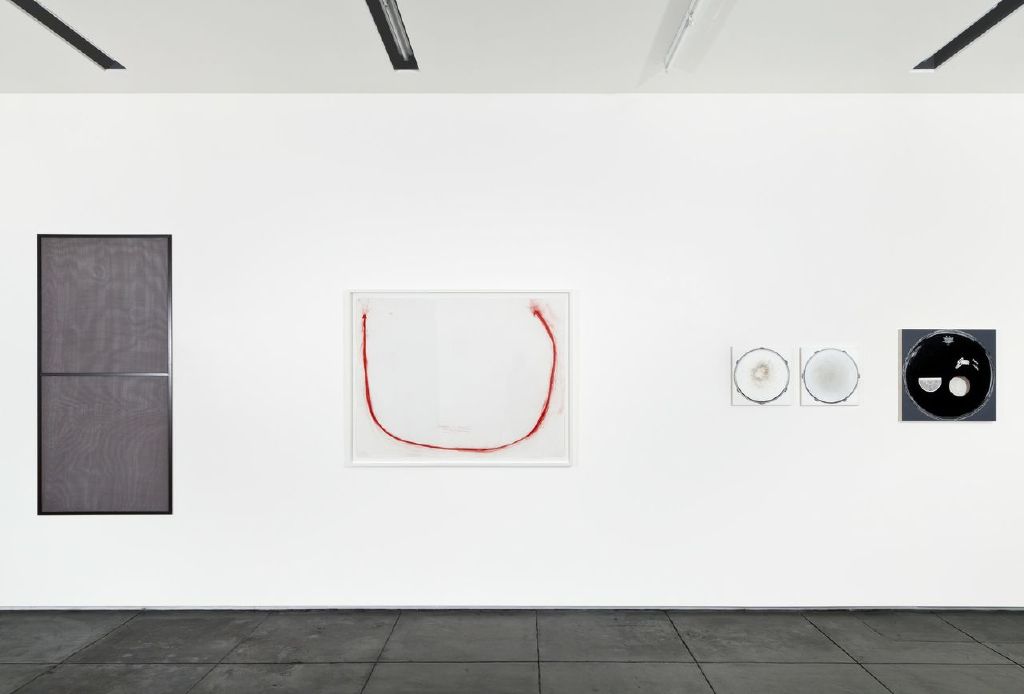
Art After the Internet
by Abe Ahn on March 10, 2014
LOS ANGELES — Much of contemporary life is spent behind a screen for work and leisure, with a great amount of time devoted to forming identities and communities through the internet. The young artists of Raster Raster, at the Aran Cravey Gallery, are acutely aware of the shrinking divide between the physical and digital worlds, and they don’t need Google Glass to interface with virtual/IRL experiences and unsettle the dichotomy between the digital and the “real.”
The group exhibition is comprised of artists, the majority in their twenties, who are savvy to digital tools, vernaculars, and memes. They are not afraid to explore concepts and forms once confined to the internet and to draw from their private experience as a means of translation. Not all of the artists fit neatly into the category of “post-internet” art as coined by artist and exhibition curator Marisa Olson, but each of them render, or “rasterize,” the digital age as experienced today.
Artists’ studio practices are increasingly split between digital and physical spaces, as recent work by painters working with digital and analogue mediums can attest. Petra Cortright’s “psxvideo username password SARA homepage” (2013) presents a digital painting on silk, hung slack from its top corners. The soft, translucent brush strokes of the painting billow across the fabric in ways a hard, angular screen could not render.
Alexandra Gorczynski’s “Loops” makes its material origins more explicit by combining painting, photography, and video to form an image of a flowery wreath, a part of which is segmented by a looping video image. Another set of digital paintings, by Travess Smalley, blend computer graphics and physical collage as a study in forms and shapes inspired by Alexander Calder — modernist painting with a digital sheen.
Drawing from imagination, the highly stylized “Triptych” (2009) by Mehreen Murtaza portrays a dystopian future or acid dream in which man and machine are wired to a techno-futurist godhead, while Jasper Spicero’s “Way to Dawn” (2013) brings fantasy to reality by way of 3D printing, mounting a pair of life-size reproductions of weapons from the video game Kingdom Hearts. Both artists channel the destructive or creative possibilities of a networked world in which the biological and material conditions of existence are forever transformed.
Bunny Rogers’ untitled lenticular prints, screenshots of Second Life avatars in various stages of undress or sexual repose, capture nascent sexuality as discovered by a young woman. Propped against a corner of the gallery is a lone mop with a pink ribbon, titled “Self-portrait (mourning mop),” that alludes to Rogers’ internet archive of ribbons and elegizes — by way of personal metaphor — a distant past or identity. These works serve as journals or mementos of private adolescent moments as lived out in the very public setting of the internet.
Not all of the works fit the mold of “post-internet” art, but they are similarly interested in communicating across mediums and between audiences. Christine Sun Kim’s charcoal drawings “All. Day.” and “All. Night.” trace the physical gestures of American Sign Language, along with musical notations, to express in symbols the incommunicable experience of being deaf. Symbols, or cymbals, compose a visual pun in Conor Backman’s semiotic puzzles, and Artie Vierkant’s “Air filter and method of constructing same” complicates notions of proprietorship and intellectual property through its reappropriation of a patented invention as a work of art.
Also featured are Marc Horowitz, most famous for his itinerant culture jamming and crowdsourced performance art, with a digital c-print “The One That Could Have Been,” and painter-turned-YouTube-wit Jayson Musson, known for his ART THOUGHTZ critiques carried out as alter ego Hennessy Youngman. Both artists playfully undermine mass media consumption and art world pretense, with the latter breaking down in eloquent and plainspoken vernacular the smoke and mirrors of International Art English.
All of these works can exist in the space of a gallery or museum, but they mostly reside in the space of a screen, reproduced here and elsewhere. The way most people will experience them will be through a digital interface, which cannot recreate color, scale, and texture as perceived in “real life.” For many of these artists, this is a necessary limitation, but it also enlarges the possibilities of how people may perceive, experience, and preserve the work of artists in the near future.
Raster Raster continues at the Aran Cravey Gallery (6918 Melrose Avenue, Los Angeles) through April 12.
